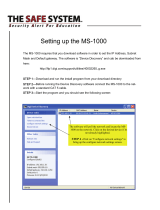
Troubleshooting processors........................................................................................................................................... 49
Troubleshooting a CPU Machine Check error ............................................................................................ 49
Troubleshooting a storage controller........................................................................................................................... 50
OMSA flagging PERC driver.....................................................................................................................................50
Importing or clearing foreign configurations using the foreign configuration view screen.......................50
Importing or clearing foreign configurations using the VD mgmt menu........................................................ 52
RAID controller L1, L2 and L3 cache error............................................................................................................ 52
PERC controllers do not support NVME PCIe drives.........................................................................................52
12 Gbps hard drive does not support in SAS 6ir RAID controllers...................................................................53
Hard drives cannot be added to the existing RAID 10 Array.............................................................................53
PERC battery discharging......................................................................................................................................... 53
PERC battery failure message is displayed in ESM log......................................................................................54
Creating non-raid disks for storage purpose........................................................................................................ 55
Firmware or Physical disks out-of-date.................................................................................................................55
Cannot boot to Windows due to foreign configuration..................................................................................... 55
Offline or missing virtual drives with preserved cache error message ......................................................... 55
Expanding RAID array.................................................................................................................................................56
LTO-4 Tape drives are not supported on PERC..................................................................................................56
Limitations of HDD size on H310 ............................................................................................................................56
System logs show failure entry for a storage controller even though it is working correctly.................. 57
Troubleshooting hard drives........................................................................................................................................... 57
Troubleshooting multiple Drive failure....................................................................................................................58
Checking hard drive status in the PERC BIOS.....................................................................................................58
FAQs............................................................................................................................................................................... 59
Symptoms..................................................................................................................................................................... 60
Drive timeout error...................................................................................................................................................... 61
Drives not accessible...................................................................................................................................................61
Troubleshooting an optical drive.................................................................................................................................... 61
Troubleshooting a tape backup unit............................................................................................................................. 62
Troubleshooting no power issues.................................................................................................................................. 62
Troubleshooting power supply units.............................................................................................................................63
Troubleshooting power source problems.............................................................................................................. 63
Troubleshooting power supply unit problems.......................................................................................................63
Troubleshooting RAID...................................................................................................................................................... 64
RAID configuration using PERC...............................................................................................................................64
RAID configuration using OpenManage Server Administrator......................................................................... 67
RAID configuration by using Unified Server Configurator.................................................................................70
Downloading and installing the RAID controller log export by using PERCCLI tool on ESXi hosts
on Dell’s 13th generation of PowerEdge servers............................................................................................. 72
Configuring RAID by using Lifecycle Controller................................................................................................... 75
Starting and target RAID levels for virtual disk reconfiguration and capacity expansion..........................76
Replacing physical disks in RAID1 configuration...................................................................................................77
Thumb rules for RAID configuration........................................................................................................................78
Reconfiguring or migrating virtual disks.................................................................................................................78
Foreign Configuration Operations........................................................................................................................... 79
Viewing Patrol Read report........................................................................................................................................81
Check Consistency report.........................................................................................................................................82
Virtual disk troubleshooting ..................................................................................................................................... 83
Troubleshooting memory or battery errors on the PERC controller on Dell PowerEdge servers........... 86
Slicing............................................................................................................................................................................. 88
4
Contents




















